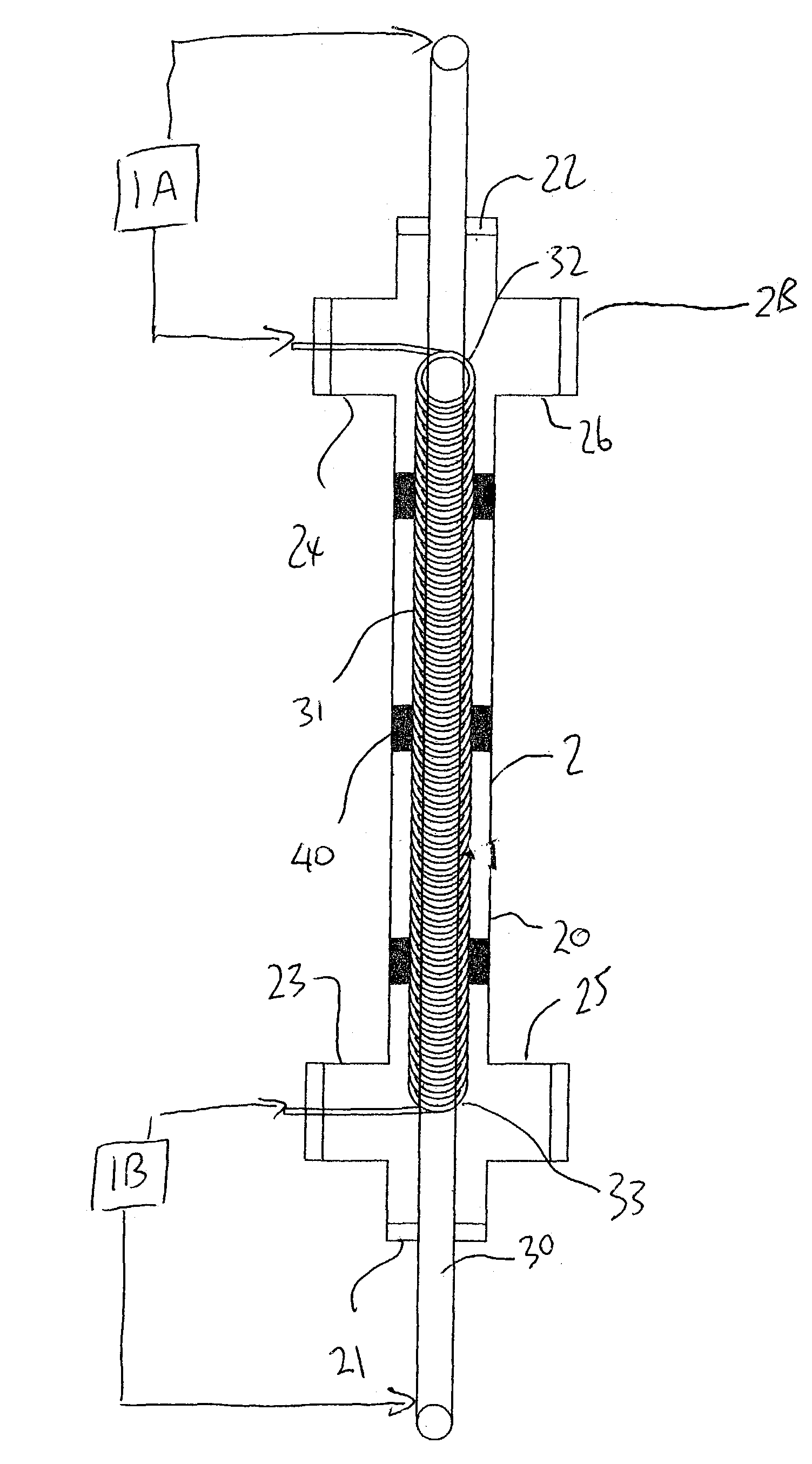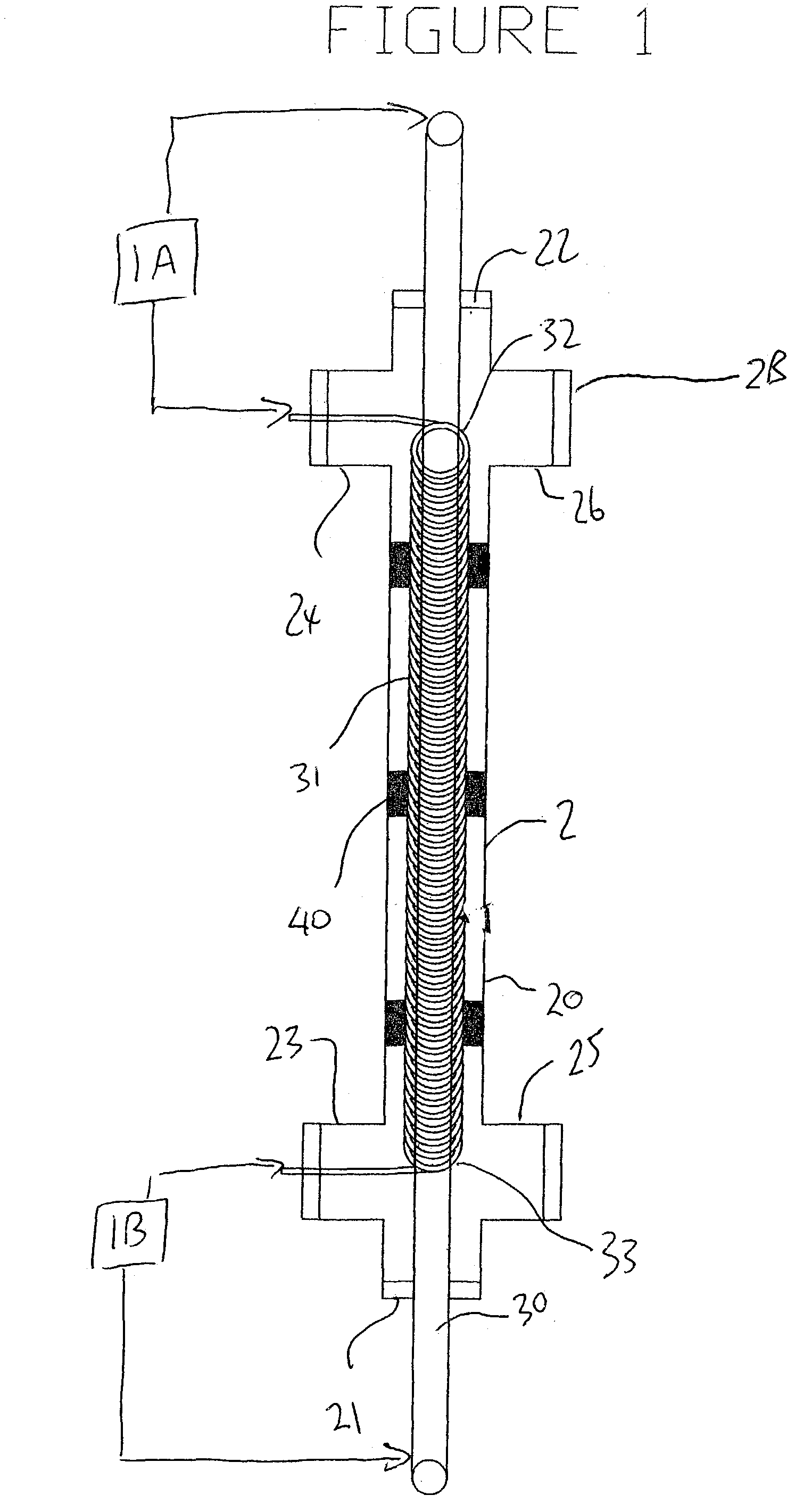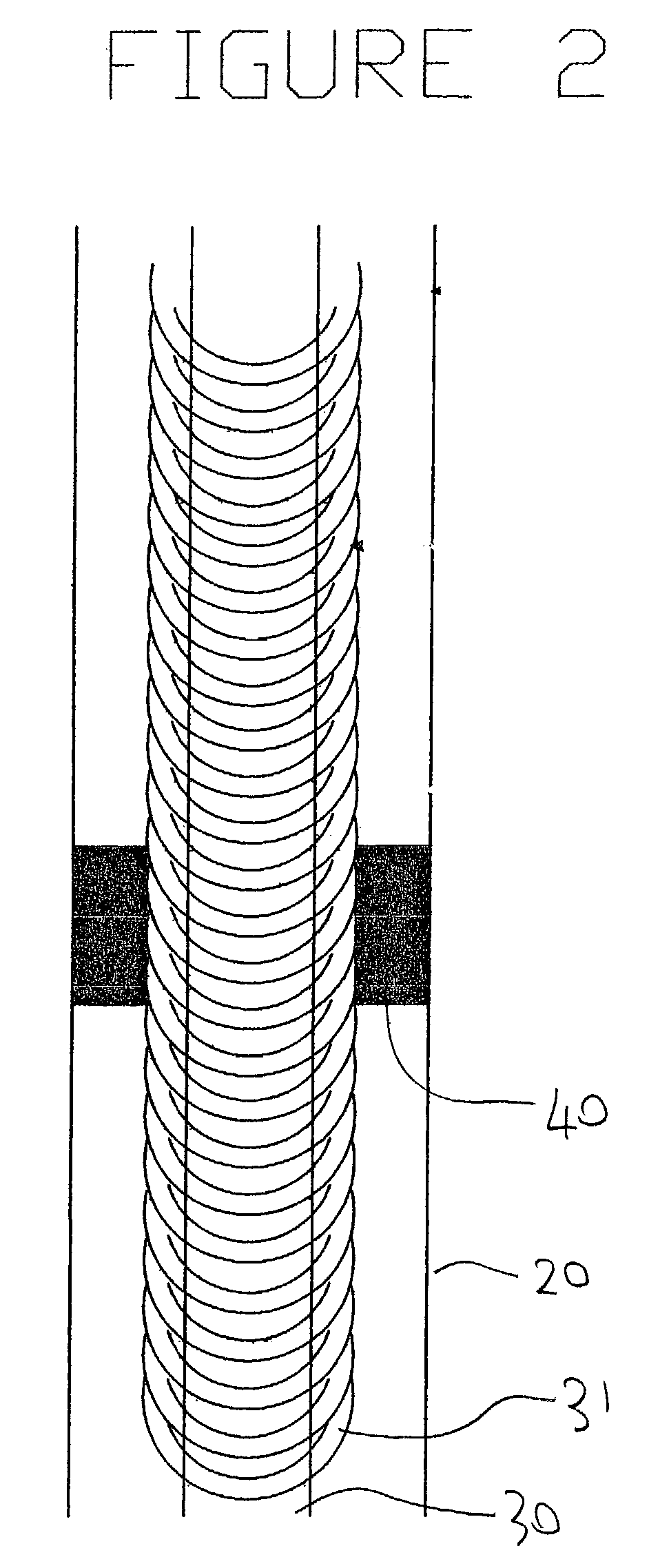Method and electrode construction for electro-coagulation treatment of water and waste water
a technology of electrocoagulation treatment and electrode construction, which is applied in the direction of electrolysis components, instruments, chemistry apparatus and processes, etc., can solve the problems of affecting the operation of the system, affecting the current density of the cell, and not only costing a lot of chemicals, etc., to achieve the effect of maintaining the current density in the cell
- Summary
- Abstract
- Description
- Claims
- Application Information
AI Technical Summary
Benefits of technology
Problems solved by technology
Method used
Image
Examples
experimental treatment trial 3
III. Experimental Treatment Trial 3
A. System Parameters[0087]1. The inlet flow rate was set at 9L / min.[0088]2. The total treatment time for trial 3 was 2:52 hours.
B. pH and Temperature Results[0089]1. The raw waste water temperature was 17.5 degrees C.[0090]2. The rapid mix chamber temperature was 19.5 degrees C.[0091]3. The slow mix chamber temperature was 19.5 degrees C.[0092]4. The settling tank temperature after 2 hours was 18 degrees C.[0093]5. The raw waste water pH was 7.6[0094]6. The waste water pH in the rapid mix chamber was 8.4[0095]7. The waste water pH in the slow mix chamber was 8.4[0096]8. The waste water pH in the settling tank was 8.3[0097]9. The waste water pH in the settling tank after 2 hours was 8.3[0098]10. The pH of the decant from the settling tank was?[0099]11.The conductivity of the raw waste water was 0.95 mS / cm[0100]12.The conductivity of the treated effluent was 0.90 mS / cm
C. Heavy Metal Analysis Results
[0101]
%JR #1RemovalParameter(raw)UnitsETS-3Efficienc...
PUM
| Property | Measurement | Unit |
|---|---|---|
| diameter | aaaaa | aaaaa |
| diameter | aaaaa | aaaaa |
| treatment time | aaaaa | aaaaa |
Abstract
Description
Claims
Application Information
 Login to View More
Login to View More - R&D
- Intellectual Property
- Life Sciences
- Materials
- Tech Scout
- Unparalleled Data Quality
- Higher Quality Content
- 60% Fewer Hallucinations
Browse by: Latest US Patents, China's latest patents, Technical Efficacy Thesaurus, Application Domain, Technology Topic, Popular Technical Reports.
© 2025 PatSnap. All rights reserved.Legal|Privacy policy|Modern Slavery Act Transparency Statement|Sitemap|About US| Contact US: help@patsnap.com



